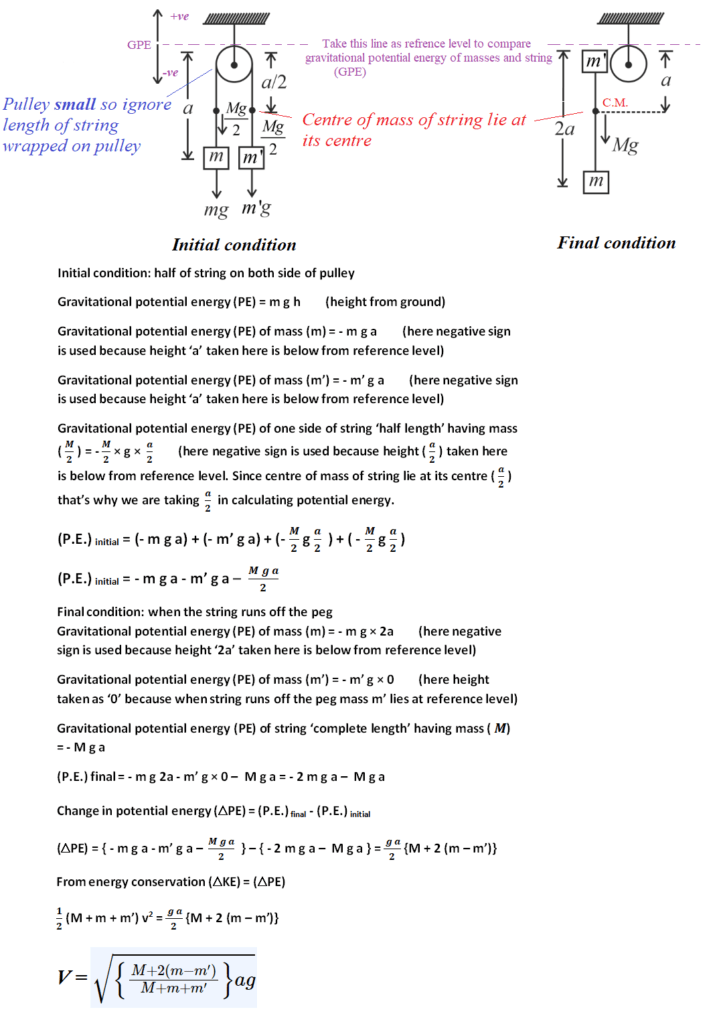👉 Question 1:
A uniform string of mass M and length 2a is placed symmetrically over a smooth and small pulley and has particles of masses m and m’ attached to its ends; show that when the string runs off the peg its velocity is

Assume that m> m’.
Solution:

Table of Contents
👉 Question 2:
Particle 1 experiences a perfectly elastic collision with a stationary particle 2. Determine their mass ratio, if (a) after a head-on collision the particles fly apart in the opposite directions with equal velocities, (b) the particles fly apart symmetrically relative to the initial motion direction of particle 1 with the angle of divergence θ = 60°.
Solution:

Since, collision is perfect elastic collision so Momentum as well as KE will be conserved,
From momentum conservation,
m1u1 + m2 u2 = m1v1 + m2 v2 (initial momentum = final momentum)
since u2 = 0 and v1 = – v2 (after collision both particles move in opposite direction, momentum is a vector quantity so negative sign included here for opposite direction of velocity)
m1u1 + m2 × 0 = m1v1 + m2 (- v1) = (m1 + m2) v1
 ……………….(1)
……………….(1)
From KE conservation,

 (KE is scalar quantity so negative sign of velocity is not included)
(KE is scalar quantity so negative sign of velocity is not included)

 ………………..(2)
………………..(2)







Collisions
Collisions are fascinating events that occur when two or more objects come into contact with each other for a short period of time and apply force to each other, resulting in an exchange of momentum and energy.
In a collision, it may be possible that both bodies do not physically touch each other. for example, collisions between two sub-atomic particles or collisions between two charged particles.
Types of collisions
Elastic Collisions
In an elastic collision, the total kinetic energy and momentum of the system remain conserved. For example, a collision between two billiard balls and a collision between two subatomic particles.
Inelastic Collisions
MY YouTube Channel Link : 👉🖱 https://www.youtube.com/channel/UCGpC7nWE0-bBv9I53MM8qjQ
A uniform string of mass M and length 2a is placed symmetrically over a smooth and small pulley … A uniform string of mass M and length 2a is placed symmetrically over a smooth and small pulley … A uniform string of mass M and length 2a is placed symmetrically over a smooth and small pulley … A uniform string of mass M and length 2a is placed symmetrically over a smooth and small pulley … A uniform string of mass M and length 2a is placed symmetrically over a smooth and small pulley …